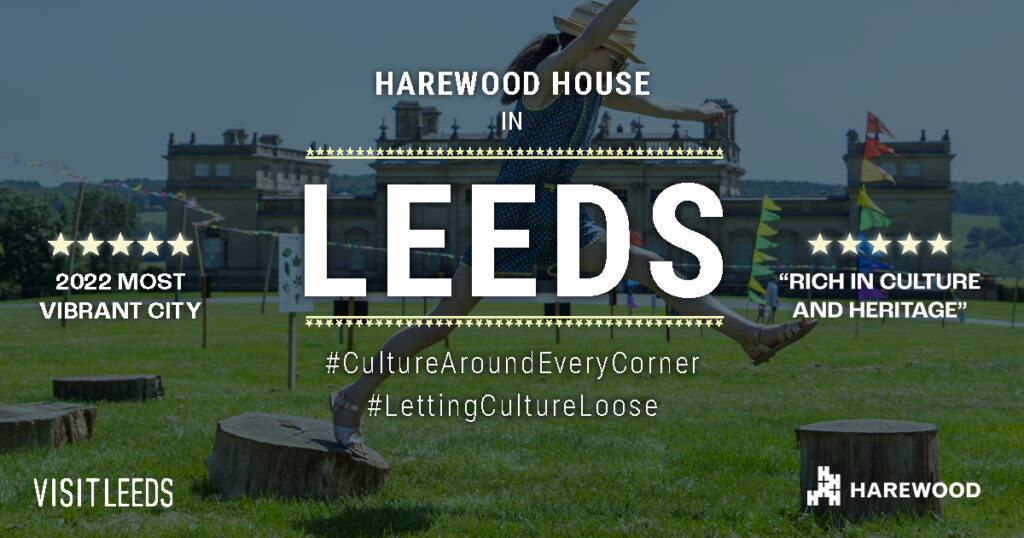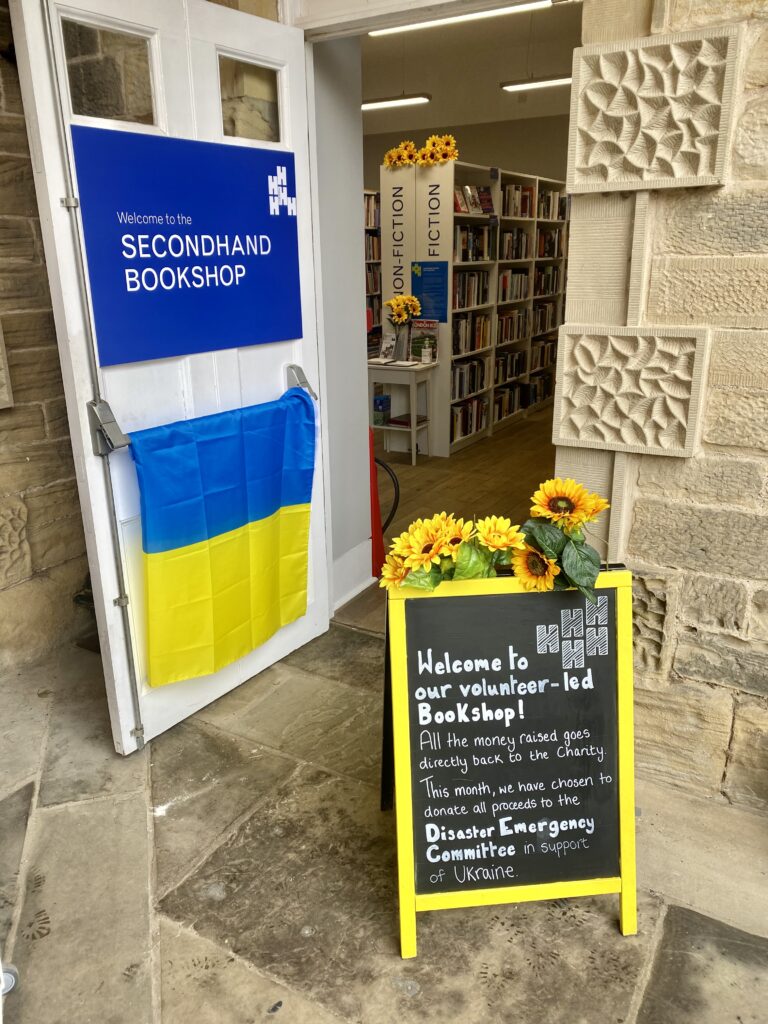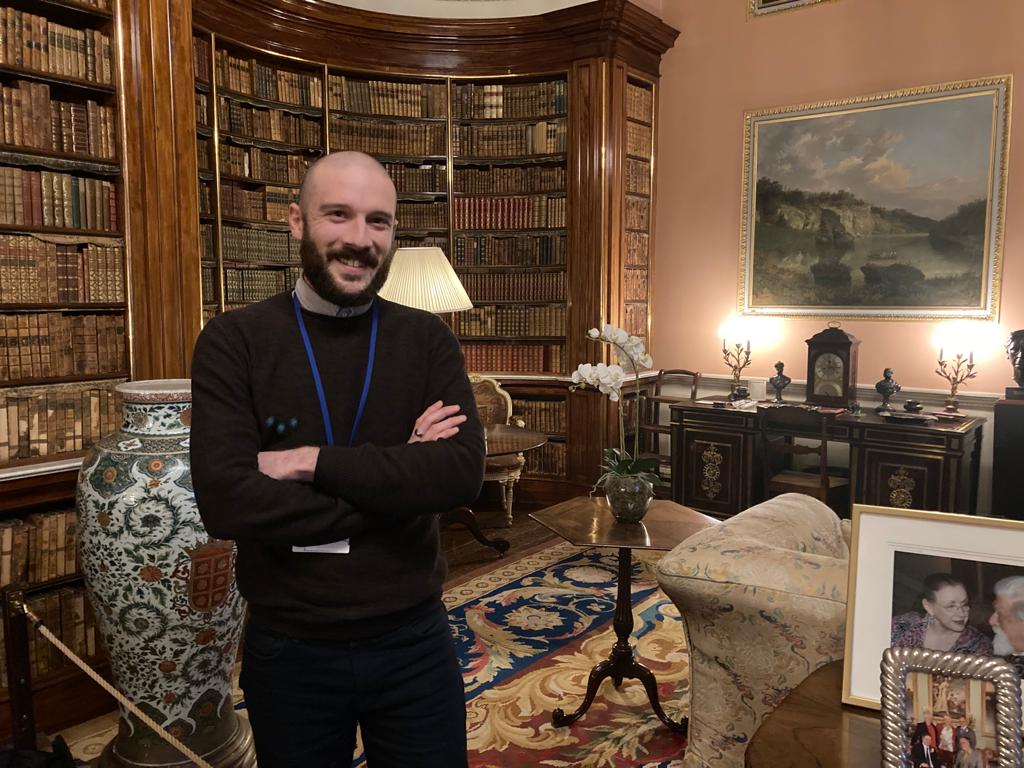
Revealed: Culture really is around every corner in Leeds
5 April 2022: Leeds’s cultural venues are uncovering culture like never before as they come together to celebrate the diverse offering of the city and encourage residents and visitors alike to join in with the cultural fun.
Named as the UK’s most vibrant city and placed in the top 100 places to visit in the world, Leeds will see its cultural institutions come together this spring as part of its Culture Around Every Corner campaign.
Home to over 40 cultural institutions representing the very best of culture in the UK, this campaign is led by Visit Leeds in collaboration with Culture Consortium Leeds (CCL) and other organisations such as Art Hostel, East Street Arts, Phoenix Dance Theatre and Chapel FM Arts Centre which together create the unique landscape of Leeds’ cultural scene.
An experience like no other, Leeds is a leading centre for culture, boasting a scene of international food & drink, street art, country house estates, ground-breaking new performances, legendary music festivals and shows and renowned global sport.
Revealing that culture is around every corner in Leeds, the destination management organisation for the city, Visit Leeds and all cultural partners have uncovered that visitors are never further than a 10 minute walk away from a cultural attraction in Leeds.
Highlighting the Leeds experience with the message that culture in Leeds is open, Culture Around Every Corner is challenging residents to explore and rekindle a love for the great culture that is on their doorstep, whilst visitors have an immense opportunity to try something new and uniquely ‘Leeds’.
Edward Appleyard, Director of Engagement at Harewood House Trust and Co-Chair of CCL’s Marketing and Communications group, commented: “As a city that’s in demand, Culture Around Every Corner has been designed to bring the cultural venues of our city together and show visitors the breadth of cultural experiences there are to enjoy. We’re extremely excited for the launch and our venues working more closely than ever before to celebrate this incredible, culture-rich city.”
Hannah Hughes, Marketing and Communications Director at Leeds Playhouse and Co-Chair of CCL’s Marketing and Communications group also commented: “We’re delighted to be working with a variety of our cultural venues in the city and we can’t wait to reveal what Leeds has to offer as part of this campaign. There’s a real appetite for venues to work in collaboration with one another and support each other and this demonstrates how fantastic the Leeds cultural community is.”
This campaign comes on the back of two years of lockdowns, and the message is loud and clear – culture in Leeds is back for good.
Some of the cultural highlights for this season (April to June) include: The riotous Hedwig and the Angry Inch at Leeds Playhouse, directed by Jamie Fletcher and starring drag queen Davina De Campo in April; a solo exhibition of new work by Nigerian artist Bubu Ogisi at The Tetley; the Henry Moore Institute celebrates the UN Year of Glass with an exhibition of contemporary glass sculpture; Leeds Museums and Galleries host workshops, trails and activities alongside exhibitions including ‘Eileen Agar: Angel of Anarchy’; Opera North’s version of Wagner’s most mysterious drama Parsifal opens in June; Howard Assembly Rooms present the best in eclectic and international music every weekend and host musicians and singers from the asylum community for Refugee Week in June; Leeds Grand Theatre’s stellar line-up sees Broadway hit School of Rock, the National Theatre’s award-winning The Curious Incident of the Dog in the Night-time, plus a bit of razzle dazzle in Chicago.
Outside the city centre Harewood House Biennial this year is Radical Acts: Why Craft Matters, an exhibition showcasing how small radical acts can have a massive impact on the world and Yorkshire Sculpture Park present David Nash: Full Circle until June.
And if you are looking for activities to entertain the family you can try: Family favourite The Gruffalo at Leeds Playhouse in April; Royal Armouries’ jousting tournaments and Medieval Easter with the chance to try some sword skills; Leeds Young Film Festival 2022 at the Carriageworks combining games with film screenings; explore dark and murky disease ridden streets, and ask ‘Can Robots Care?’ at the sometimes gruesome but always fascinating Thackray Museum of Medicine; and at the first direct Arena, The Masked Singer comes to the live stage plus a host of full-pelt live music and more.
Culture Around Every Corner precedes Leeds’ Year of Culture: Leeds 2023. Designed to ‘let culture loose’, Leeds 2023 will see 12 signature events alongside a multitude of creative experiences take place across the city in a celebration of all things culture. Made for everyone, local, national, and international artists and communities will be coming together to create a year-long celebration unique to Leeds. Gearing up to the Year of Culture, the Culture Around Every Corner campaign is just the start of what’s to come.
To find more about Culture Around Every Corner and to plan your next trip, visit www.visitleeds.co.uk/culture-around-every-corner
ENDS
For more information, please contact VisitLeeds@ilkagency.com
Notes to Editors:
Visit Leeds is the official Destination Management Organisation for the city of Leeds, which aims to showcase the breadth of cultural attractions, innovative food & drink destinations and extensive shopping facilities on offer in Leeds and its surrounding areas. Its vision is for the city to be known as a world-class, modern and historic European destination with a reputation for a vibrant and creative cultural scene set against the backdrop of rich heritage and outstanding architecture.
As the second largest metropolitan area and one of the fastest growing cities in the UK outside of London, Leeds attracted over 30 million visitors in 2019 from both the UK and abroad. Its location and exceptional national and international transport links make it the ideal getaway for a variety of visitors to the Yorkshire region and beyond.
Not only is Leeds one of the greenest cities in Europe, it also ranks as the third best shopping destination in the UK outside of London as breath-taking Victorian arcades sit alongside iconic luxury brands and well-known high street retailers.
Leeds is brimming with a wealth of culture, history and diversity, having been home to the UK’s first West Indian Carnival back in 1967. The city’s rich culture is also reflected in the plethora of live events. From world-class organisations; Opera North, Northern Ballet, to unrivalled live music experiences and hilarious comedy, Leeds truly is a treasure trove of live entertainment.
Leeds is also notably known as a world-class sporting destination, having hosted the World Triathlon Series, The Cricket World Cup and The Ashes, while this year will see the city host the World Triathlon Series, Rugby League World Cup 2021 and the British Transplant Games. Leeds is also home to Leeds United Football Club, Yorkshire County Cricket Club, and Rugby League’s Leeds Rhinos.
Over the past 15 years, regeneration has modernised the city centre, while complementing its incredible architecture and heritage. The city is now synonymous with the very best England has to offer; bursting with life and cultural energy.
For more information, visit: www.visitleeds.co.uk
Culture Consortium Leeds
Established to network Leeds’ greatest cultural offerings together with a shared ambition and a passion for the city, Culture Consortium Leeds includes 17 venues, theatres, visitor attractions, museums, galleries, performance arts organisations and others who harness the power of great culture in Leeds to entertain and engage over 4 million people every year and generate £135 million for the local economy.
Members included in Culture Around Every Corner are: Harewood House Trust, Royal Armouries, Leeds Playhouse, Yorkshire Sculpture Park, Leeds Museums & Galleries, Temple Newsham, Lotherton Hall, Leeds Heritage Theatres, The Tetley, The Carriageworks, Millennium Square, Leeds Town Hall, University of Leeds Galleries, Opera North, Northern Ballet, Henry Moore Institute and Thackray Museum of Medicine.

